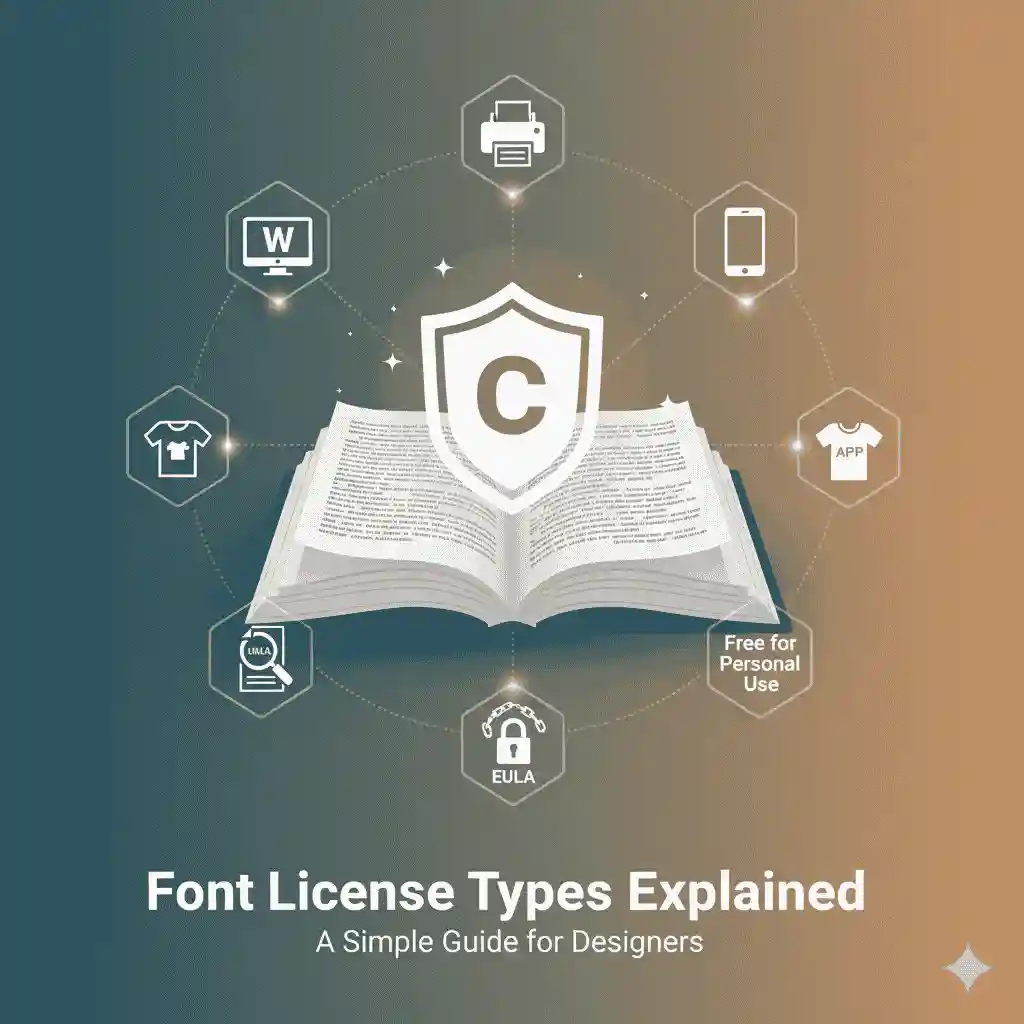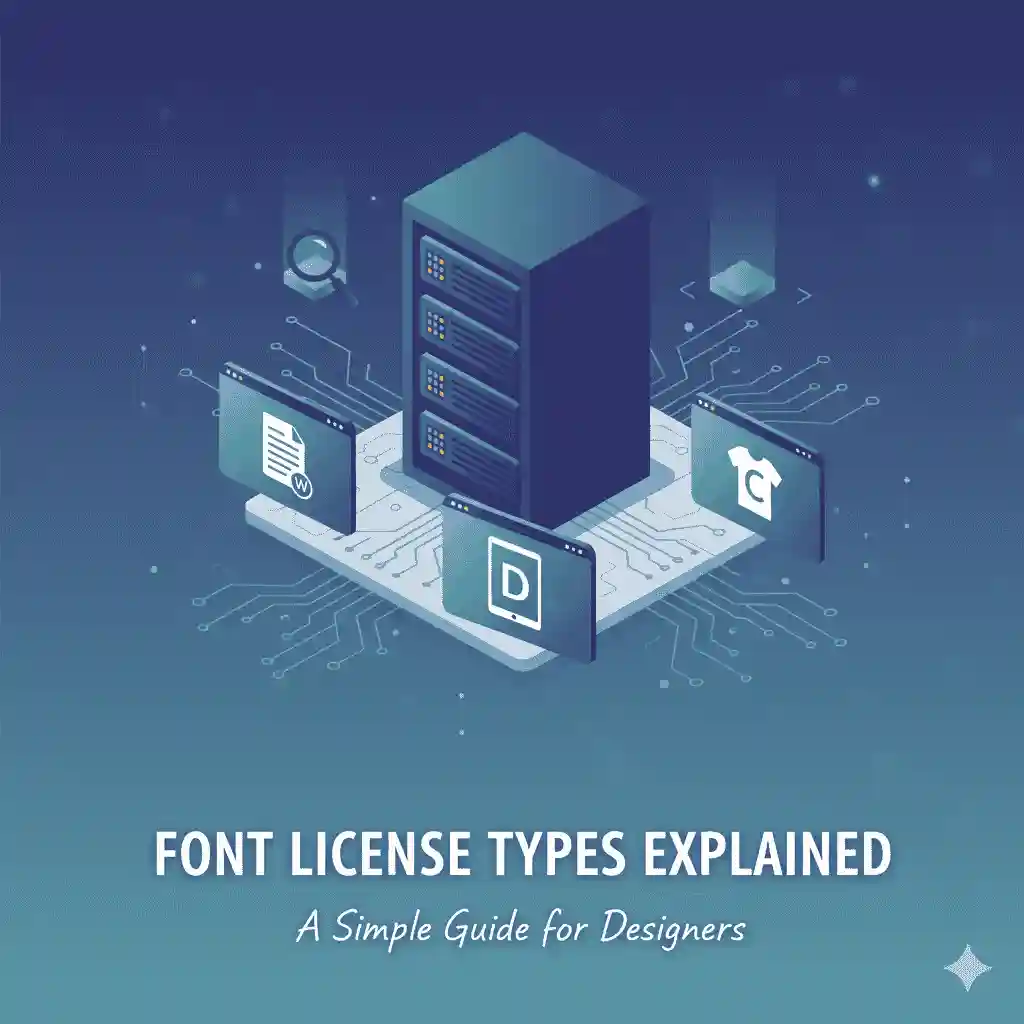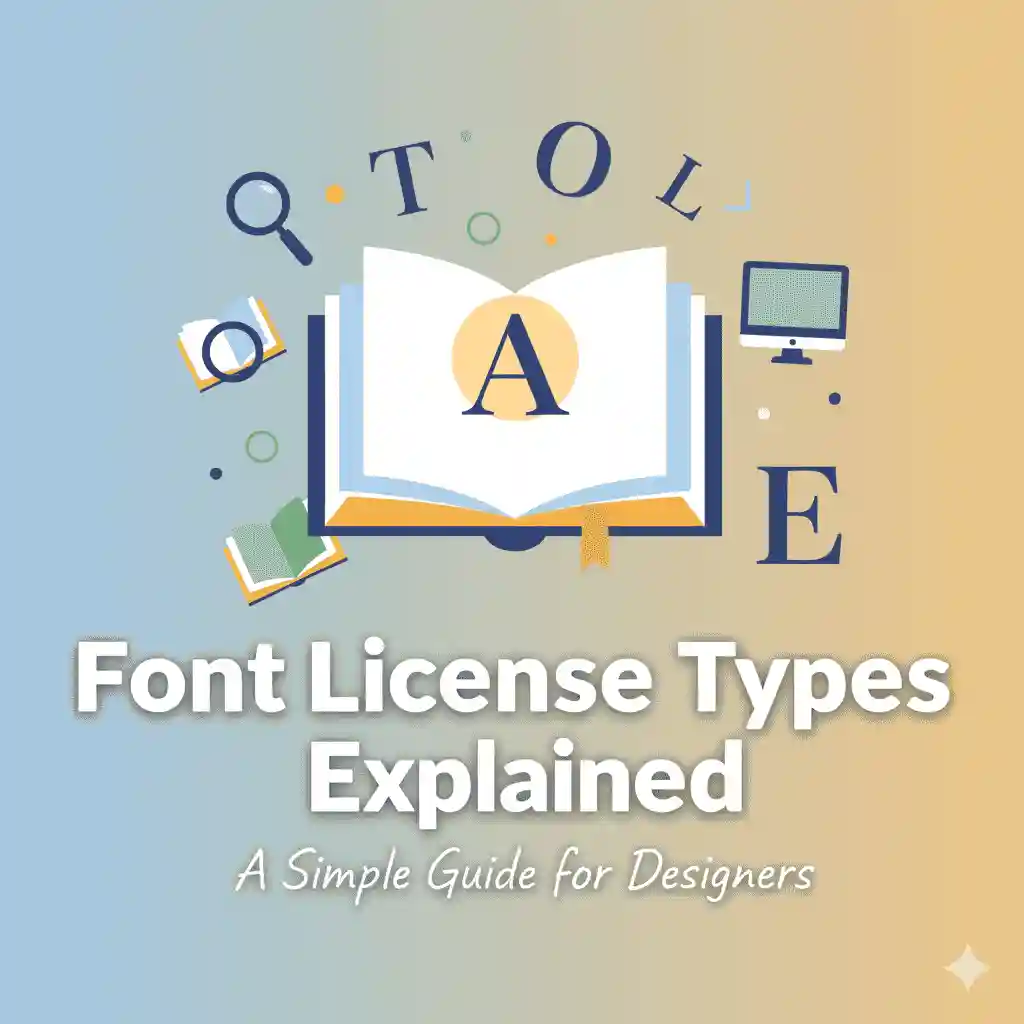Table of Contents
- Introduction
- What is a Font License?
- Why Font Licensing Matters
- Common Font License Types
- Desktop License
- Webfont License
- App License
- ePub License
- Broadcast License
- Custom/Enterprise License
- How to Choose the Right Font License
- Risks of Using Fonts Without a License
- Where to Buy Licensed Fonts
- Recommended Fonts from Edric Studio
- Conclusion
- References
1. Introduction

Typography is one of the most powerful elements in design, but choosing the right font involves more than just style and readability. Every designer, business owner, or content creator needs to understand font license types to avoid legal issues and ensure proper usage.
This guide will walk you through everything you need to know about font licenses, the most common types, and how to choose the right one for your projects.
2. What is a Font License?
A font license is a legal agreement that defines how a font can be used. Fonts are intellectual property, and just like software or photography, they come with usage rights. When you purchase or download a font, you’re not buying the font itself—you’re purchasing the rights to use it under specific conditions.
3. Why Font Licensing Matters
Ignoring font licensing can lead to:
- Legal consequences (lawsuits and fines).
- Brand inconsistencies (if fonts get replaced due to copyright).
- Project delays when you have to replace unlicensed fonts.
For designers and businesses, understanding licensing is crucial for professional credibility and brand safety.
4. Common Font License Types

4.1 Desktop License
A desktop license allows you to install fonts on your computer and use them in software like Adobe Illustrator, Photoshop, or Microsoft Word. It’s the most common license for graphic design and print materials such as brochures, posters, or logos.
4.2 Webfont License
A webfont license lets you embed fonts into websites via CSS. Instead of converting text into images, webfonts ensure better SEO, accessibility, and responsive design.
Example: If you’re building an eCommerce store, you’ll need a webfont license for your brand typography.
4.3 App License
This license covers fonts embedded in mobile or desktop applications. If your font is part of an app’s interface, you must secure an app license.
4.4 ePub License
Fonts used in eBooks, PDFs, or digital publications require an ePub license. This ensures proper distribution rights when publishing digital files to platforms like Kindle or Apple Books.
4.5 Broadcast License
If you plan to use fonts in TV shows, movies, or video ads, a broadcast license is required. It covers both local and international broadcasting.
4.6 Custom/Enterprise License
For large corporations or unique projects, a custom license may be created to cover specific needs. This is common for global brands that require unlimited font usage across multiple platforms.
5. How to Choose the Right Font License
When selecting a license, ask:
- Where will the font be used? (print, web, app, TV, etc.)
- How many users or installations are needed?
- Will it be distributed commercially?
Choosing the correct license ensures compliance and avoids future costs.
6. Risks of Using Fonts Without a License
Using fonts without proper licensing may seem harmless, but it can result in:
- Copyright infringement claims
- Expensive settlements
- Brand damage
Always source fonts from reputable sites with clear licensing terms.
7. Where to Buy Licensed Fonts
You can purchase licensed fonts from marketplaces like:
Or from independent studios like Edric Studio, where you’ll find unique, professionally designed fonts with clear licensing.
8. Recommended Fonts from Edric Studio

If you’re looking for fonts with proper licensing for your projects, check out:
- Hanrigton Serif Font – Great for branding and editorial projects (Desktop + Webfont licenses available).
- Extra Shot Font – Perfect for digital interfaces with Webfont licensing options.
- Partner Beauty Script Font – Ideal for logos and packaging designs, comes with flexible licensing.
These fonts are crafted to meet both creative and commercial needs while ensuring you stay fully compliant with font usage rules.
9. Conclusion
Fonts are more than just design assets—they are licensed works with specific usage rights. By understanding font license types, you can confidently select the right font for your projects while protecting your brand legally and creatively.
Whether you need fonts for print, web, apps, or broadcasting, choosing the right license is essential. Explore our collection at Edric Studio to find professional fonts that match your project needs.